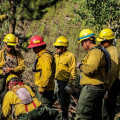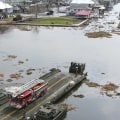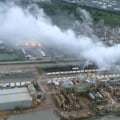When it comes to emergency situations, preparation is key. Knowing what to do in the event of an emergency can help minimize the impact on personnel and operations. This guide will provide an overview of the five steps of emergency management, as well as tips on how to create an effective emergency response plan for your business. The five steps of emergency management are prevention, mitigation, preparedness, response, and recovery.
Prevention involves taking measures to avoid an incident, such as providing safety training and conducting regular safety inspections. Mitigation involves reducing the impact of an incident by taking steps such as providing first aid kits and fire extinguishers. Preparedness involves creating plans that show the design of access roads, parking areas, property buildings, entrances to buildings, the location of emergency equipment, and the location of the controls of the utility and building protection systems. Response actions may include activating the emergency operations center, evacuating threatened populations, opening shelters and providing mass care, rescue and emergency medical care, extinguishing fires, and urban search and rescue.
Recovery involves restoring operations to normal after an incident has occurred. Now that you know why your organization needs a plan and what it should cover, let's discuss how to create an effective emergency response plan for your business. You can create your own emergency response plan from scratch or use a pre-designed template to make the process easier. The first step in creating an emergency response plan is to conduct a comprehensive threat assessment to identify the types of events that may affect your organization and analyze their likelihood and possible impact. This list of responsibilities should be completed using the pre-developed summary of responses for each emergency situation.
The plan should also include instructions for operating all systems and equipment, as well as a list of roles and responsibilities for staff members. The OSHA HAZWOPER standard (29 CFR 1910,120) provides information on PPE levels and compliance with PPE requirements during emergency response operations. Employers should work with emergency response organizations in their jurisdictions to ensure that organizations are prepared to safely respond and perform necessary rescue operations that may pose unique or particularly dangerous conditions for first responders. The home page on emergency preparedness and response provides a list of all the specific hazards that the Agency currently has information available on its website. Providing workers with a basic understanding of how to prepare for workplace emergencies is essential. Employers may be required to comply with the OSHA hazardous waste operations and emergency response (HAZWOPER) standard (29 CFR 1910,120) when workers are expected to perform shutdown processes.
Older adults are active in the community and are often called upon for their wisdom and the unique gifts they can offer in the event of a disaster. Being prepared before and during such an event will greatly impact your ability to help and receive help during an emergency or disaster. In conclusion, having an effective emergency response plan is essential for any organization. It should include instructions for operating all systems and equipment, as well as a list of roles and responsibilities for staff members. Employers should work with local emergency response organizations to ensure they are prepared to safely respond in case of an incident.
Finally, providing workers with a basic understanding of how to prepare for workplace emergencies is essential.






